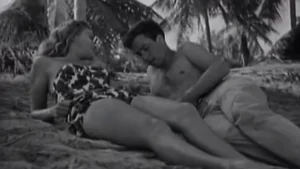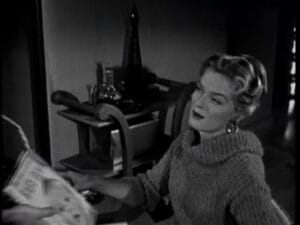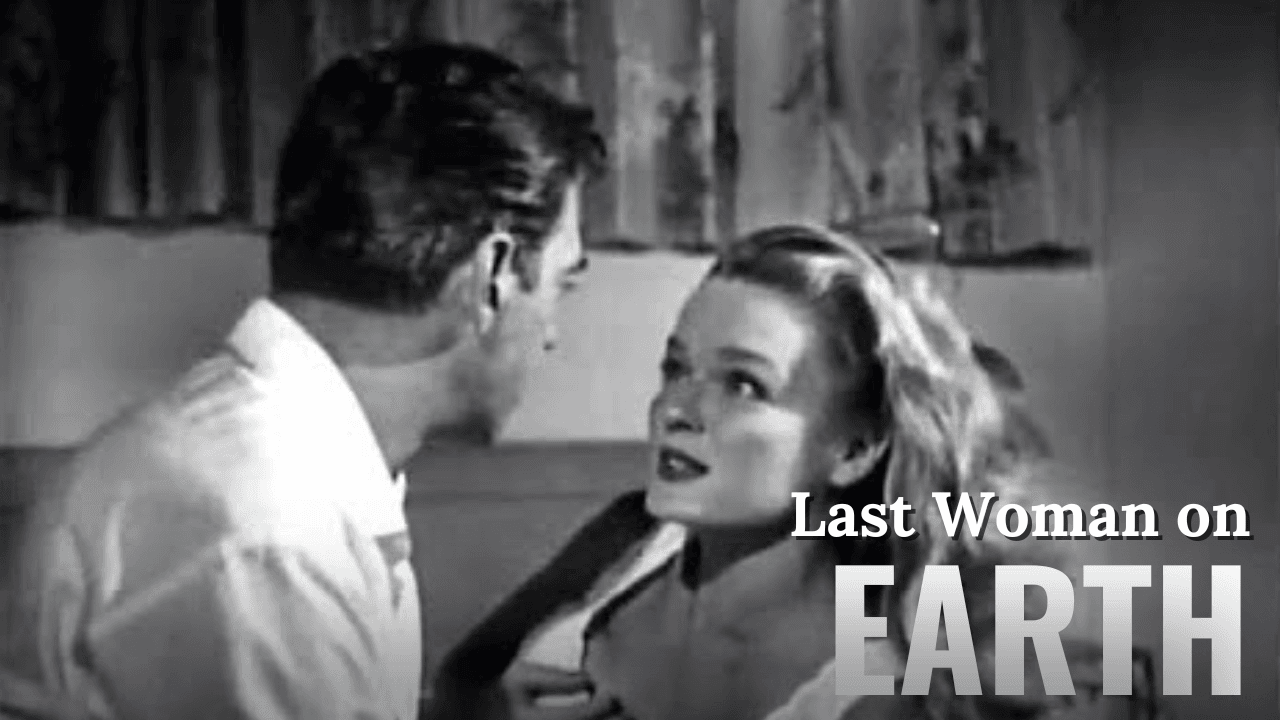The World After: An In-Depth Review of “Last Woman on Earth” (1960)
Introduction

Last Woman on Earth (1960) is a compelling entry into the post-apocalyptic science fiction genre, offering a stark and introspective look at survival, human nature, and existential loneliness. Directed by Roger Corman, this film deviates from the action-packed, effects-heavy narratives common in sci-fi of the era. Instead, it leans into psychological drama and character-driven storytelling, making it a thought-provoking experience for viewers.
In this comprehensive review, we will explore every facet of “Last Woman on Earth,” from its plot and thematic depth to its cinematography and character development. We will also delve into the film’s lasting impact on the genre and provide a critical assessment of its performances, screenplay, and legacy.
Plot Summary

The story begins in a seemingly ordinary suburban town, only for its inhabitants to vanish suddenly. The world has been devastated by an unknown cataclysmic event, leaving behind an eerie silence. The protagonist, Evelyn, awakens from a coma to find herself alone in this ghostly world. As she navigates the new reality, she soon discovers two other survivors: Harold, a pragmatic and survival-driven man, and Martin, a more introspective and emotionally scarred individual.
Together, they attempt to navigate this new existence, struggling to secure food, shelter, and companionship in a world stripped of its once-vibrant humanity. However, their fragile alliance is soon tested by their conflicting personalities and the psychological toll of isolation. The film does not rely on elaborate special effects or intense action sequences; instead, it paints a somber portrait of the human experience when faced with the end of civilization.
Cast and Main Character Bios
Betsy Jones-Moreland as Evelyn
Betsy Jones-Moreland delivers a poignant and powerful performance as Evelyn, the titular “last woman on Earth.” Jones-Moreland, a talented actress known for her work in B-movies, brings a sense of vulnerability and resilience to her role. Evelyn’s journey from shock and despair to determination and self-preservation is portrayed with remarkable nuance, making her character one of the most memorable elements of the film.
Antony Carbone as Harold
Antony Carbone plays Harold, the pragmatic and often ruthless survivor who prioritizes staying alive above all else. Carbone, a frequent collaborator with Roger Corman, was known for his ability to bring a sense of realism to his roles. Harold’s character embodies the darker aspects of human nature, illustrating how desperation can override morality in times of crisis.
Robert Towne as Martin
Robert Towne, who would later become a renowned screenwriter (best known for “Chinatown”), plays Martin, the introspective and emotionally torn survivor. His character provides a counterbalance to Harold’s hard-edged survivalist mentality, offering a glimpse into the more philosophical and melancholic side of post-apocalyptic existence.
Cinematography and Direction
Roger Corman’s direction in “Last Woman on Earth” stands out for its use of stark black-and-white cinematography to evoke a sense of desolation. The choice of empty streets, abandoned homes, and hauntingly still landscapes adds to the film’s eerie and unsettling atmosphere. Cinematographer Jacqueline Durran employs long, lingering shots to emphasize the vast emptiness of the world, reinforcing the psychological weight of the characters’ isolation.
Themes and Analysis
The Fragility of Civilization
One of the film’s central themes is the delicate nature of civilization. The world, once teeming with life and activity, is now a barren shell of what it used to be. This stark contrast forces the audience to question how quickly society could collapse under the right circumstances.
Survival vs. Morality
The tension between Harold and Martin highlights a key philosophical dilemma: should survival come at the cost of morality? Harold’s ruthless pragmatism clashes with Martin’s more ethical approach, illustrating the complexities of human nature when stripped of societal norms.
Loneliness and Despair
The film delves into the psychological effects of extreme loneliness. Evelyn’s character arc is particularly compelling as she transitions from shock to a quiet acceptance of her new reality. Her interactions with Harold and Martin further emphasize the need for companionship and the difficulties of maintaining relationships under dire circumstances.
Legacy and Cultural Impact
Despite being a low-budget film, “Last Woman on Earth” has influenced numerous post-apocalyptic narratives in cinema and literature. Its introspective take on the genre paved the way for future films that focus on psychological depth rather than action-packed spectacle. Movies like “The Quiet Earth” (1985) and “I Am Legend” (2007) owe a debt to Corman’s vision.
Final Verdict
“Last Woman on Earth” (1960) is a must-watch for fans of classic sci-fi and psychological dramas. Its slow-burn narrative, strong performances, and haunting atmosphere make it a standout in the genre. While it may not offer the thrills of modern blockbusters, its exploration of human resilience and moral ambiguity ensures its place as a thought-provoking cinematic experience.



